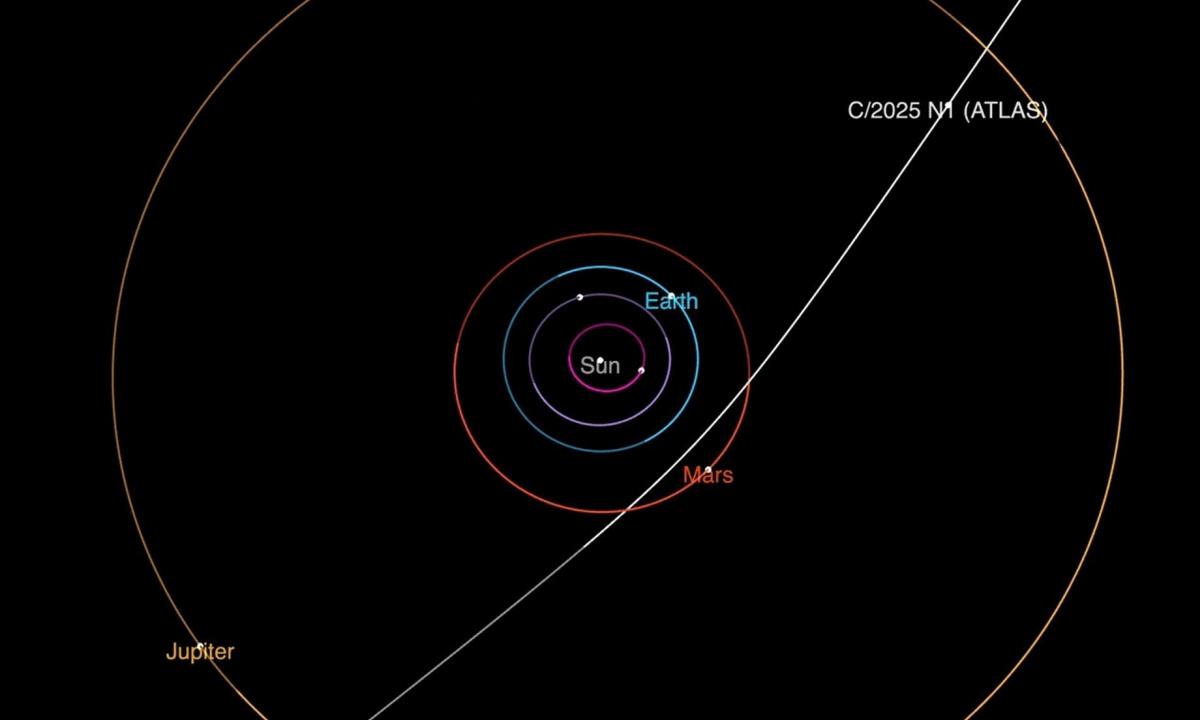It measures up to 20 kilometers wide, comes from another corner of the galaxy and travels to more than 240,000 kilometers per hour. It is called 3i/Atlas (although at first it was known as A11PL3Z) and is the third interstellar object that is detected by crossing our solar system. A true cosmic colossus that, if it fell on earth, could erase Madrid from the map without blinking. But do not panic: scientists have assured that it does not represent any threat, although they follow it closely.
The comet was detected on July 1 by one of the telescopes of the Atlas Network, in Río Hurtado (Chile) and, since then, has unleashed a real observation race at a global level. In Spain, the Institute of Astrophysics of the Canary Islands (IAC) has turned to the study of the object with its facilities in the Teide Observatory. Thanks to his data, it has been confirmed that the newcomer was not a simple clueless asteroid, but an authentic interstellar visitor, as they were Oumuamua in 2017 and Borisov In 2019.
He 3i/atlas It is now 670 million kilometers from the Sun, in the direction of the system. It approaches quickly, almost 70 kilometers per second, at the end of October it will reach its closest point to our star, crossing inside the orbit of Mars, although it will remain far from the earth. At no time will it be less than 240 million kilometers from our planet, that is, more than once and a half the distance that separates us from the sun.

Diagram showing the trajectory of the interstellar comet 3i/Atlas in the Solar System.
Although it does not represent any danger, scientists do not hide that their size impresses. The first estimates suggest that 3i/Atlas could measure between 10 and 30 kilometers in diameter, much more than the Borisov and superior to the asteroid that caused the extinction of dinosaurs. If such an object hit the earth, the scenario would be apocalyptic: its energy would be equivalent to millions of nuclear bombs exploiting at the same time.
To get an idea: the central almond of Madrid (the area that encloses the M-30) has about 10 kilometers wide. This kite would cover her whole and still left over. If I impact there, I would erase the map not only the capital, but its entire metropolitan area, and leave such a huge crater that the map of Spain would resemble a donut. Its energy would be equivalent to millions of nuclear bombs exploiting at the same time. There would be nothing left.
According to the first estimates, the kite could have between 10 and 30 kilometers in diameter, much more than Borisov, and comparable or even higher than the object of Chicxulub. “We still do not know its shape or how it rotates, but it does have a faint comma that could become brighter when you approach the sun,” said astronomer Larry Denneau, of the Atlas team. That makes it even more interesting for scientists, who plan to follow their evolution with telescopes around the world.
From the Canary Islands, the IAC has confirmed the presence of that cloud of gas and dust that betrays its commencement, and participates in an international campaign to study its composition, trajectory and possible origins. The next few weeks will be key: the comet will remain visible until September, then disappear after the sun and, if everything goes well, it will look again in December, when the observations are expected to be reshape.
“It does not represent any danger,” they insist from NASA and ESA. But nobody hides the emotion. Objects such as 3I/Atlas do not come every day: they are remains of other planetary systems, expelled from their mother stars millions of years ago and released into the vacuum to land, by chance, in our backyard. Seeing them pass is like reading a postcard from another part of the galaxy. And this is also written in very large letters.
(Tattranslate)Science(T)nasa(T)Atronomía



